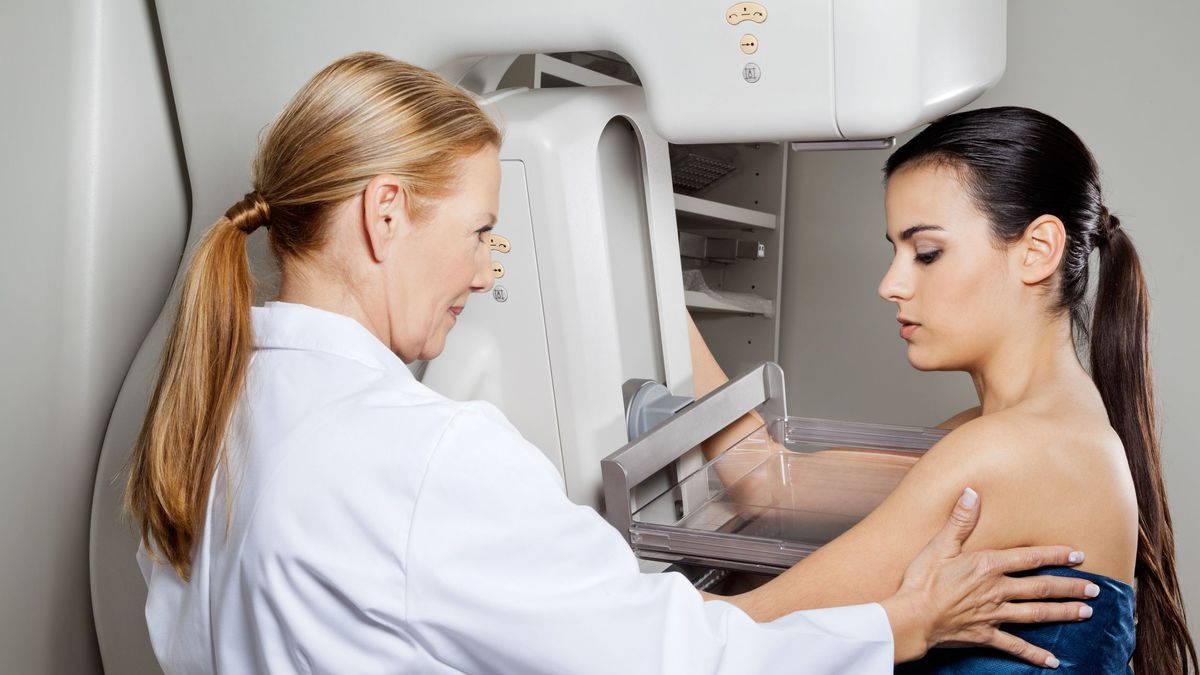There are things you should know to understand
what breast cancer is, know your chances for
getting it, and how to find it early. Finding breast
cancer early is critical because when it is found
early, it is easier to treat. Read to learn more about
the common symptoms of breast cancer and the
best way many women find breast cancer early.
What is breast cancer?
Breast cancer is the second most common cancer
among women, after skin cancer. It is a disease in
which cells in the breast grow out of control.
Cancer cells can also spread, or metastasize, to
other parts of the body.

What symptoms should I look for?
Some warning signs of breast cancer are:
• New lump in the breast or underarm (armpit).
• Thickening or swelling of part of the breast.
• Irritation or dimpling of breast skin.
• Redness or flaky skin in the nipple area or the breast.
• Pulling in of the nipple.
• Nipple discharge other than breast milk, including blood.
• Any change in the size or shape of the breast.
• Pain in the breast.
These symptoms can happen with other conditions that are not cancer. If you notice any of these symptoms, talk to your health care provider right away.
What can I do to find breast cancer early?
Breast cancer screening involves checking a woman’s breasts for cancer before there are signs or symptoms of the disease. Task Force (USPSTF) recommends that most women who are at average risk and are 50 to 74 years old, get one every 2 years. USPSTF recommendations state that women with a parent, sibling, or child with breast cancer are at a higher risk for breast cancer and may benefit from beginning screening in their 40s. Weighing the benefits and risks of screening is important when considering your screening options. If you’re 40 to 49 years old, talk to your health care provider about when to start screening. A mammogram is an X-ray picture of the breast. Doctors use a mammogram to look for early signs of breast cancer. The United States Preventive Services

Task Force (USPSTF)
Task Force (USPSTF) recommends that most women who are at average risk and are 50 to 74 years old, get one every 2 years. USPSTF recommendations state that women with a parent, sibling, or child with breast cancer are at a higher risk for breast cancer and may benefit from beginning screening in their 40s. Weighing the benefits and risks of screening is important when considering your screening options. If you’re 40 to 49 years old, talk to your health care provider about when to start screening.
Are you concerned that you cannot afford to have a
mammogram?
Most health insurance plans cover the cost of screening
mammograms. If you have a low income or do not have
insurance, you may qualify for a free or low-cost mammogram
through CDC’s National Breast and Cervical Cancer Early
Detection Program.
National Breast and Cervical Cancer Early
Detection Program
To learn more about the program,
call (800) CDC-INFO or visit
www.cdc.gov/cancer/nbccedp/
What can I do to lower my chance of getting breast cancer?
One of the most important things you can do to lower your risk of breast cancer, is to know your risk of breast cancer. Talk to your doctor about what that means for you. Your doctor will consider factors that cannot be changed like:
• Your personal history of breast problems.
• Your family’s history of breast cancer.
• Your breast density (the amount of connective and fatty tissue in your breasts).
• Your age. Most breast cancers are found after age 50.
• Your menstrual and childbirth history.
• Your history of radiation treatment therapy to the chest or breasts.
• If you took the drug diethylstilbestrol (DES), which was given to some pregnant women in the United States between 1940 and 1971 to prevent miscarriage, you have a higher risk. Women whose mothers took DES while pregnant with them are also at higher risk.
• If you or close family members have known mutations (changes) in your breast cancer genes (BRCA1 or BRCA2). Women who have inherited these genetic changes are at higher risk of breast
and ovarian cancer. You will only know if you have a mutation if you have had genetic testing. Even in the absence of having abnormal genes when tested, it is important to know your family history; we don’t know all the genes that cause breast cancer. Your doctor will also consider factors that can be changed like:
• Any hormone replacement use
Here are some things you can do to reduce your chance of getting breast cancer:
• Keep a healthy weight.
• Engage in regular physical activity.
• Don’t drink alcohol, or limit alcoholic drinks to no more than one per day.
To learn more about breast cancer, visit www.cdc.gov/cancer/breast/

